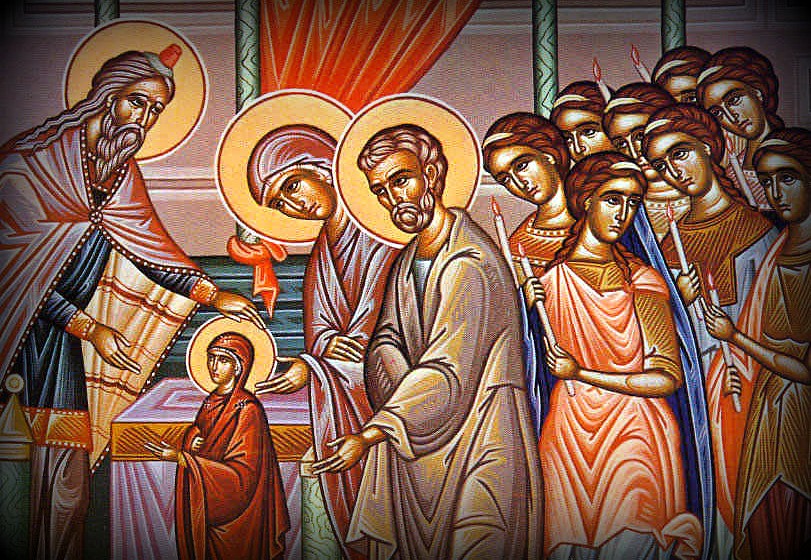
In the early Church, stories and accounts about Jesus’ life abounded. St Luke mentions this in the introduction to his Gospel:
“Inasmuch as many have…set in order a narrative of those things which have been fulfilled among us…it seemed good to me also, having had perfect understanding of all things from the very first, to write to you an orderly account…that you may know the certainty of those things in which you were instructed” (Luke 1:1–4).
By describing his account as “orderly” and inspired by a “perfect understanding,” he implies there were other accounts that presented an inaccurate picture of Christ’s life and ministry.
Over the years, the Church sifted through these writings, separating what was true from what was false and destructive. The Church did not do this in a heavy-handed manner, as some claim. Rather, false gospels and epistles were not read in the services of the Church, because the people of God did not see their Savior portrayed in them. They fell into disuse, and by the time the Church had the opportunity, in the fourth century, to solidify a New Testament canon, the Fathers at that council did not need to invent it. They simply confirmed the practice of the worshiping Church.
Yet there are still writings, though not included in the New Testament, that the Church considers good and edifying. One of these writings, the Protoevangelium of James, was not included in the New Testament because it was not directly about Christ. Instead, it recounts the Nativity of the Theotokos, which we recently celebrated, and her Entrance into the Temple, which we celebrate on November 21st.
That we celebrate these two events as Great Feasts suggests a question. If the birth of the Theotokos and her entrance into the Temple are so important for us, why don’t we find them in the Bible? At its root, this is a question about the relationship between Scripture and Holy Tradition.
Vladimir Lossky described Tradition as “the life of the Holy Spirit in the Church.” This includes the divine services, the hymns for saints and feasts, iconography, sacred music, church architecture, theology, spirituality, and the writings of the saints. But how does Scripture fit into this?
We could regard Scripture and Tradition as two separate, yet equal, sources of divine revelation. This view is fraught with peril, because it allows for Tradition to develop contrary to Scripture. This is why the Church rejects such doctrines as the Filioque, the Immaculate Conception, and Papal Infallibility. They grew apart from Scripture and, in fact, contradict it.
The other extreme is to say that the Scripture is the entirety of Tradition. This is the doctrine of Sola Scriptura—that the Scripture alone is necessary for our salvation. This doctrine contradicts itself, since the Church existed before the New Testament. It also contradicts the exhortation of St Paul, who encourages us to “hold the traditions which you have been taught, whether by word, or our epistle” (2 Thess 2:15).
The “middle road” of the Church is that Scripture is in Tradition and, in fact, is the very heart of Tradition. This means that all aspects of life in the Church have their basis in, and are in accord with, Holy Scripture. The hymns of our services are Scriptural commentary. The services themselves are patterned after the worship of the Old Testament and the vision of St John recorded in Revelation. Icons were first painted to proclaim the Gospel to a culture that could not read. Theology draws upon the Scriptures and the experience of the Saints to correct distortions about the person of Christ or the unity of the Triune God. Tradition is, in the fullest sense of the word, Scriptural.
Though the Entrance of the Theotokos is not recorded in the Scripture, it is a fulfillment of the prophecies of the Old Testament. The hymns for the Vigil of the Feast return again and again to Psalm 44: “She shall be brought to the King in robes of many colors; the virgins, her companions who follow her, shall be brought to You…They shall enter the King’s palace” (Ps 44:14–15).
The Entrance of the Theotokos is not “unscriptural”. Rather, it has its very basis in Scripture, and we can only understand it in light of Old Testament prophecy. Even though Tradition is ever-expanding and grows in response to the movement of the Holy Spirit, it does not admit anything foreign to the Gospel or anything that would distort its message.
Christ continues to work in our lives, and He writes on the hearts of holy men and women who in every generation have been well-pleasing to Him. This, too, is Scriptural, as we read in the Gospel of St John: “[E]ven the world itself could not contain the books that would be written” if we were to record all of Christ’s works (John 21:25). This is the essence of the Church’s Tradition—the life lived in the Holy Spirit—and it is impossible to contain such an abundance of grace in two dimensions.